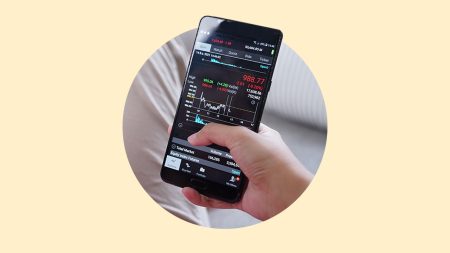The Standard & Poor’s 500 – the S&P 500 – is the benchmark stock index in the United States, and it’s come to symbolize the stock market as a whole. The S&P 500 has a strong record of returns, averaging about 10 percent per year over long periods, and it’s easy for investors to buy the index through an exchange-traded fund (ETF), getting immediate exposure to all its stocks.
Here are the best S&P 500 ETFs as well as some alternative funds based on the S&P 500 for investors to consider.
Best S&P 500 ETFs
The funds below invest in the S&P 500 in the same weighting as the official index. Because the S&P 500 is weighted by market capitalization, larger companies have a larger weighting in the index. The funds here try to closely mirror the performance of the official S&P 500. These funds tend to have low expense ratios, which is the fee you’ll pay to the fund management company.
The funds below are all index funds since they track a specific index and invest passively with the fund’s management reflecting only official changes in the index. You can also explore the best Nasdaq funds if you’re looking to invest in tech stocks.
(Fund data as of June 19, 2025)
Vanguard S&P 500 ETF (VOO)
This Vanguard fund tracks the S&P 500 and is one of the company’s most popular funds.
5-year annualized return: 15.6 percent
Expense ratio: 0.03 percent
iShares Core S&P 500 ETF (IVV)
The iShares S&P 500 fund is another popular way to invest in the benchmark index.
5-year annualized return: 15.8 percent
Expense ratio: 0.03 percent
SPDR S&P 500 ETF Trust (SPY)
This State Street fund is the granddaddy of ETFs in the U.S. and tracks the S&P 500 index but at a somewhat higher cost than rival funds.
5-year annualized return: 15.7 percent
Expense ratio: 0.095 percent
SPDR Portfolio S&P 500 ETF (SPLG)
This State Street fund functions exactly the same as its sister fund above, but it comes with the most competitive expense ratio here.
5-year annualized return: 15.8 percent
Expense ratio: 0.02 percent
Other funds to invest in the S&P 500 with a twist
The funds above track the regular S&P 500 index, so their performance closely follows that index. But the funds below slice and dice the index for a different set of returns than the official S&P 500 index. Some funds include all the stocks in the index but weigh them differently, while other funds carve out a section of growth or value stocks and base their fund on those.
Invesco S&P 500 Equal Weight ETF (RSP)
This Invesco fund weights the hundreds of stocks in the S&P 500 equally (not by market cap), so each stock has about a 0.2 percent share of the fund. This fund will do better than a regular S&P 500 fund when smaller stocks are outperforming and larger stocks are lagging.
5-year annualized return: 13.3 percent
Expense ratio: 0.20 percent
iShares S&P 500 Growth ETF (IVW)
This iShares fund tracks a subset of the S&P 500 that includes the fastest-growing stocks, as measured by factors such as three-year sales-per-share growth and the stock’s momentum.
5-year annualized return: 16.2 percent
Expense ratio: 0.18 percent
iShares S&P 500 Value ETF (IVE)
This iShares fund tracks a subset of the S&P 500 that includes the value-priced stocks, as measured by factors such as a stock’s low price-to-earnings ratio and price-to-sales ratio.
5-year annualized return: 14.0 percent
Expense ratio: 0.18 percent
SPDR Portfolio S&P 500 Growth ETF (SPYG)
This State Street fund owns stocks among a subset of the fastest-growing S&P 500 stocks, as determined by the stock’s momentum, sales growth and earnings growth compared to price change.
5-year annualized return: 18.6 percent
Expense ratio: 0.04 percent
SPDR Portfolio S&P 500 Value ETF (SPYV)
This State Street fund owns stocks among a subset of the value-priced S&P 500 stocks, as determined by the stock’s price-earnings ratio, price-to-sales ratio and price-to-book ratio.
5-year annualized return: 16.4 percent
Expense ratio: 0.04 percent
Vanguard S&P 500 Growth ETF (VOOG)
This Vanguard fund tracks a subset of the S&P 500 that includes the value-priced stocks, as determined by factors such as a stock’s low price-earnings ratio and price-to-sales ratio.
5-year annualized return: 16.3 percent
Expense ratio: 0.07 percent
Risks of S&P 500 ETFs
While ETFs can be a great way to invest in the market, they still have some downsides:
- Volatility: An ETF can be highly volatile, although it tends to be less volatile than individual stocks. In the short term, an ETF can move up or down, and you’ll need to commit to holding on for years to enjoy the fund’s strong long-term returns.
- Tracking risk: An ETF tracking a specific index may not perfectly mirror the returns of the index, and it’s called tracking risk. In the case of these S&P 500 funds, it’s not a huge risk, but other types of index funds may vary widely, especially if they’re investing in less liquid stocks.
- Structural costs: ETFs that use leverage to multiply your returns or that try to profit on stocks falling have extra costs that can make them more costly. These extra costs can drag on their returns over time and their ability to track their target index. That’s not an issue for the S&P 500 funds above, but it’s something to watch if you’re investing in leveraged ETFs.
Bottom line
An S&P 500 index fund can be a great way to invest in the market, and you won’t need a lot of investing expertise to do so. In fact, legendary investor Warren Buffett has long advised most investors to simply buy the index rather than invest in individual stocks. It’s incredibly easy to buy an S&P 500 fund, and you can do so at any of the best brokers for stock trading.
Why we ask for feedback
Your feedback helps us improve our content and services. It takes less than a minute to
complete.
Your responses are anonymous and will only be used for improving our website.
Help us improve our content
Read the full article here












